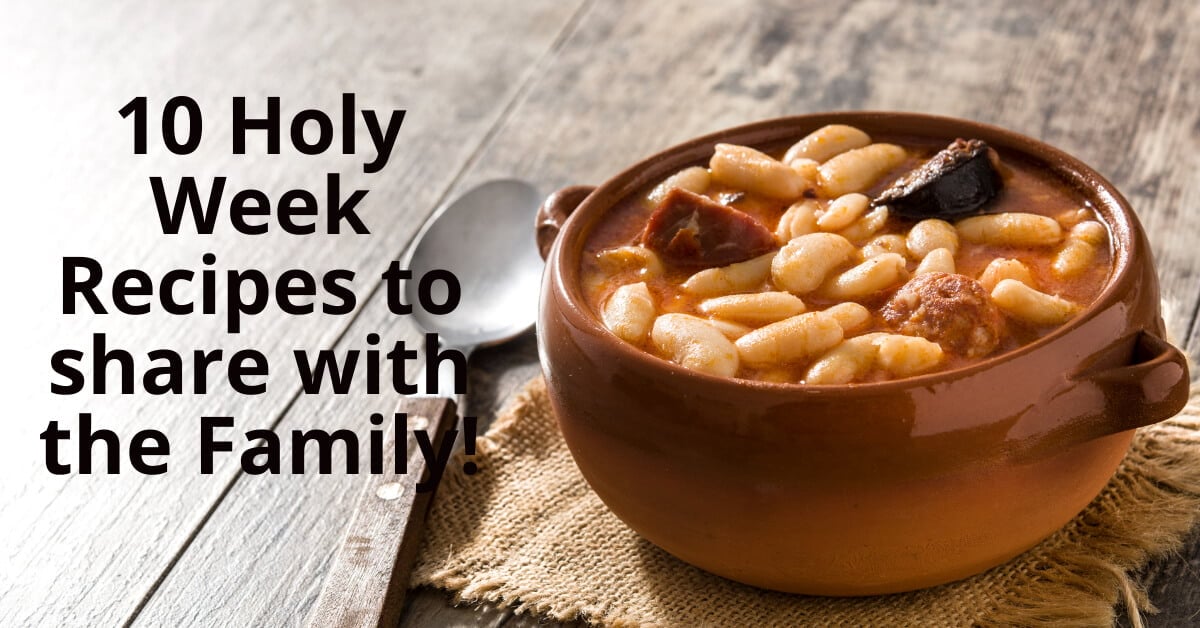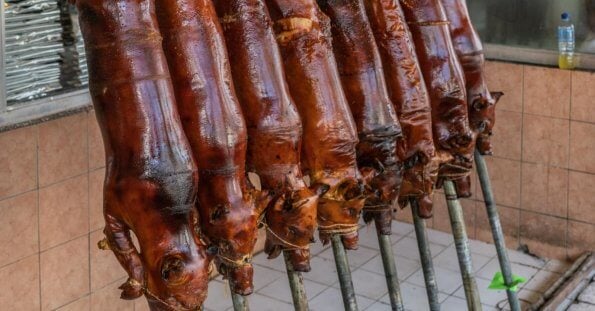Hey there, friends! Can you believe Holy Week is just around the corner? This special time of year brings people together as we reflect, celebrate, and share delicious food with our loved ones. To help you make the most of this sacred season, we’ve gathered a list of 10 mouthwatering recipes from different countries, each with its own unique story and significance. We’re talking about everything from sweet treats to hearty, comforting dishes that’ll surely make your taste buds sing!
So, why not try something new this year? Whether you’re hosting a family gathering or looking for the perfect dish to share with friends, our collection of popular Holy Week recipes has got you covered. As you explore these dishes, you’ll learn about their cultural and religious backgrounds, which make them even more special. We’ve also included handy ingredient substitutes and difficulty ratings to make your cooking experience a breeze.
Ready to dive into these scrumptious recipes? Let’s get cooking and create lasting memories with our loved ones this Holy Week!
10 Popular Holy Week recipes around the World
| # No. | Dish Name | Ingredients | Substitutes | Relevance | Difficulty |
|---|---|---|---|---|---|
| 1 | Hot Cross Buns | Flour, sugar, yeast, milk, butter, eggs, salt, raisins, cinnamon, nutmeg, icing | Dried cranberries or currants for raisins | Sweet buns eaten on Good Friday, symbolizing Jesus’ crucifixion | 3/5 |
| 2 | Bacalao a la Vizcaína | Salted cod, tomatoes, onions, garlic, bell peppers, olives, capers, potatoes, olive oil | Firm, white fish (fresh or salted) for cod | Spanish dish served during Holy Week to abstain from meat | 3/5 |
| 3 | Fanesca | Salted cod, pumpkin, squash, corn, fava beans, peas, lentils, rice, milk, cheese, spices | Firm, white fish (fresh or salted) for cod | Ecuadorian soup symbolizing unity and the Last Supper | 4/5 |
| 4 | Capirotada | Bolillo bread, brown sugar, cinnamon, cloves, water, cheese, raisins, peanuts, butter | French bread for bolillo bread | Mexican dessert with ingredients symbolizing the Passion of Christ | 2/5 |
| 5 | Torta Pascualina | Pie dough, spinach, ricotta cheese, eggs, Parmesan cheese, onions, nutmeg, salt, pepper | Swiss chard or kale for spinach | Italian pie celebrating the end of Lenten fasting | 3/5 |
| 6 | Sopa de Ajo | Garlic, bread, olive oil, paprika, chicken or vegetable broth, eggs | Smoked paprika for regular paprika | Simple, meat-free Spanish soup eaten during Holy Week | 2/5 |
| 7 | Koulourakia | Flour, sugar, butter, eggs, vanilla extract, baking powder, milk, sesame seeds | Anise seeds for sesame seeds | Greek buttery cookies enjoyed during Holy Week and Easter celebrations | 2/5 |
| 8 | Pão de Ló | Eggs, sugar, flour, lemon zest | Orange zest for lemon zest | Light and fluffy Portuguese dessert enjoyed during Holy Week | 3/5 |
| 9 | Potica | Flour, sugar, yeast, milk, butter, eggs, walnuts, honey, cinnamon | Pecans or hazelnuts for walnuts | Sweet, rolled pastry enjoyed throughout Central and Eastern Europe | 4/5 |
| 10 | Sfogliatella | Flour, water, semolina, ricotta cheese, sugar, eggs, vanilla extract, candied orange peel | Puff pastry dough; candied lemon peel for orange peel | Italian pastry symbolizing the resurrection of Jesus | 4/5 |
5 Sweet Treats for Holy week to add to your Recipe for the Week!
Hey, sweet-tooth friends! We know how much you love your desserts, so we couldn’t leave you hanging during Holy Week. In addition to those 10 amazing dishes we already shared, here are 5 more delightful sweet treats that are popular during this time. Grab your apron, and let’s make this Holy Week even more delicious!
- Torrijas (Spanish-style French Toast) This Spanish dessert is made with slices of bread soaked in milk, sugar, and cinnamon, then fried to golden perfection. Top it off with honey or powdered sugar, and you’ve got yourself a heavenly treat that’ll disappear in no time!
- Mazurek (Polish Easter Cake) Mazurek is a beautifully decorated, flat Polish cake made with a shortcrust pastry base and topped with layers of almond paste, fruit preserves, and sometimes chocolate. It’s as much a feast for the eyes as it is for your taste buds!
- Tsoureki (Greek Easter Bread) Tsoureki is a fluffy, braided bread with a hint of sweetness, infused with flavors like orange, mahleb, and mastika. Often adorned with red-dyed eggs, it’s a must-try treat that represents the resurrection of Christ and the renewal of life.
- Pinca (Croatian Easter Bread) This mildly sweet, buttery bread from Croatia is flavored with citrus zest, rum, and vanilla. It has a distinct round shape with a cross on top, making it a perfect centerpiece for your Holy Week celebrations.
- Cozonac (Romanian Sweet Bread) Cozonac is a traditional Romanian bread filled with a scrumptious mixture of walnuts, cocoa, sugar, and raisins. This fluffy, rich dessert will have everyone asking for seconds (or maybe even thirds)!
So there you have it, 5 more sweet treats that you can add to your Holy Week menu. From breads to cakes, these desserts are perfect for sharing with family and friends as you come together to celebrate this special time. Happy baking, everyone!
What is binignit?
Binignit, aka….. Dinuldog, Tabirak, Guinataan.
Binignit is a delicious Filipino dessert that you’ll definitely want to try!
Binignit is a traditional Filipino sweet soup or porridge that’s often enjoyed during Holy Week, particularly on Good Friday. It’s made from a delightful mix of ingredients, including glutinous rice, root crops like taro and sweet potatoes, and tropical fruits such as bananas and jackfruit. The mixture is then cooked in a creamy coconut milk base, sweetened with sugar, and thickened with a bit of rice flour or cornstarch.
The warm, comforting flavors of binignit make it a popular treat not just during Holy Week, but also throughout the year in the Philippines. It’s typically served as a snack or dessert and can be enjoyed either hot or cold, depending on your preference.
So, if you’re ever in the mood for something sweet and unique, give binignit a try! It’s a perfect way to experience the wonderful flavors of Filipino cuisine and might just become a new favorite in your dessert rotation.
Binignit Recipe
Binignit is a traditional Filipino dessert made with sticky rice, coconut milk, and various fruits and root vegetables. It’s typically served during special occasions and is a delicious and unique dessert to try at home. Here’s a simple recipe to get you started:
Ingredients:
- 1 cup sticky rice
- 6 cups water
- 1 can coconut milk (13.5 oz)
- 1/2 cup brown sugar
- 1/2 tsp salt
- 1 ripe banana, sliced
- 1 sweet potato, peeled and cubed
- 1 taro root, peeled and cubed
- 1 can jackfruit (20 oz), drained and sliced
- 1 can young coconut (20 oz), drained
Instructions:
- Rinse the sticky rice in cold water and drain.
- In a large pot, bring 6 cups of water to a boil. Add the sticky rice and cook for about 15 minutes, stirring occasionally.
- Add the sweet potato and taro root to the pot and continue cooking for another 10-15 minutes or until they are tender.
- Add the coconut milk, brown sugar, and salt to the pot and stir to combine. Allow the mixture to simmer for a few more minutes.
- Add the sliced banana, jackfruit, and young coconut to the pot and cook for an additional 5-10 minutes or until everything is heated through.
- Serve the binignit warm in bowls and enjoy!
This recipe makes about 6 servings, so you can adjust the quantities based on how much you want to make. I hope you enjoy making and trying this delicious Filipino dessert!
What to eat during holyweek?
In conclusion, Holy Week is a special time of reflection, prayer, and togetherness for many people around the world. Food plays a big role in these celebrations, with families and communities coming together to enjoy traditional dishes that hold deep cultural and religious significance. From savory meals to scrumptious desserts, there’s a wealth of delicious options to choose from during this sacred time.
So, what should you eat during Holy Week? Well, it’s entirely up to you and your family’s traditions! You can explore dishes from various cultures, like the Spanish Bacalao a la Vizcaína or the Filipino binignit, or stick to your own family favorites. The important thing is to spend time with your loved ones, share in the joy of preparing and eating delicious food, and appreciate the deeper meaning behind these special dishes.
No matter what you choose to serve, remember that the essence of Holy Week is about coming together, reflecting on one’s faith, and celebrating the love and hope that the season represents. So, gather around the table, enjoy the amazing food, and create lasting memories with your family and friends. Happy Holy Week, everyone!
























